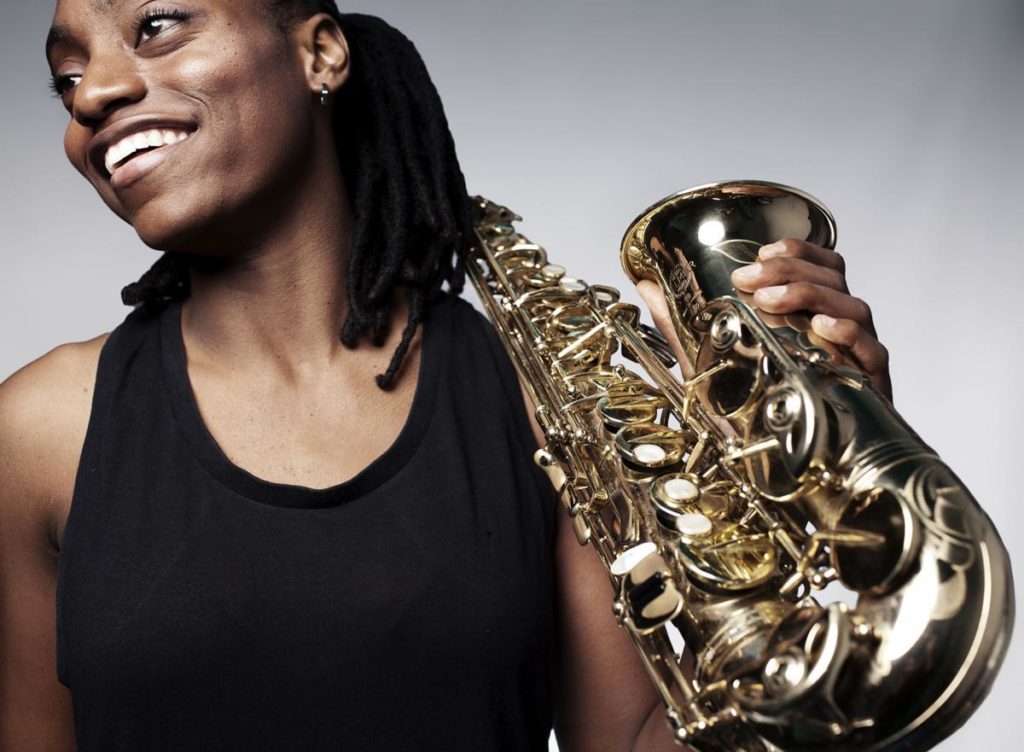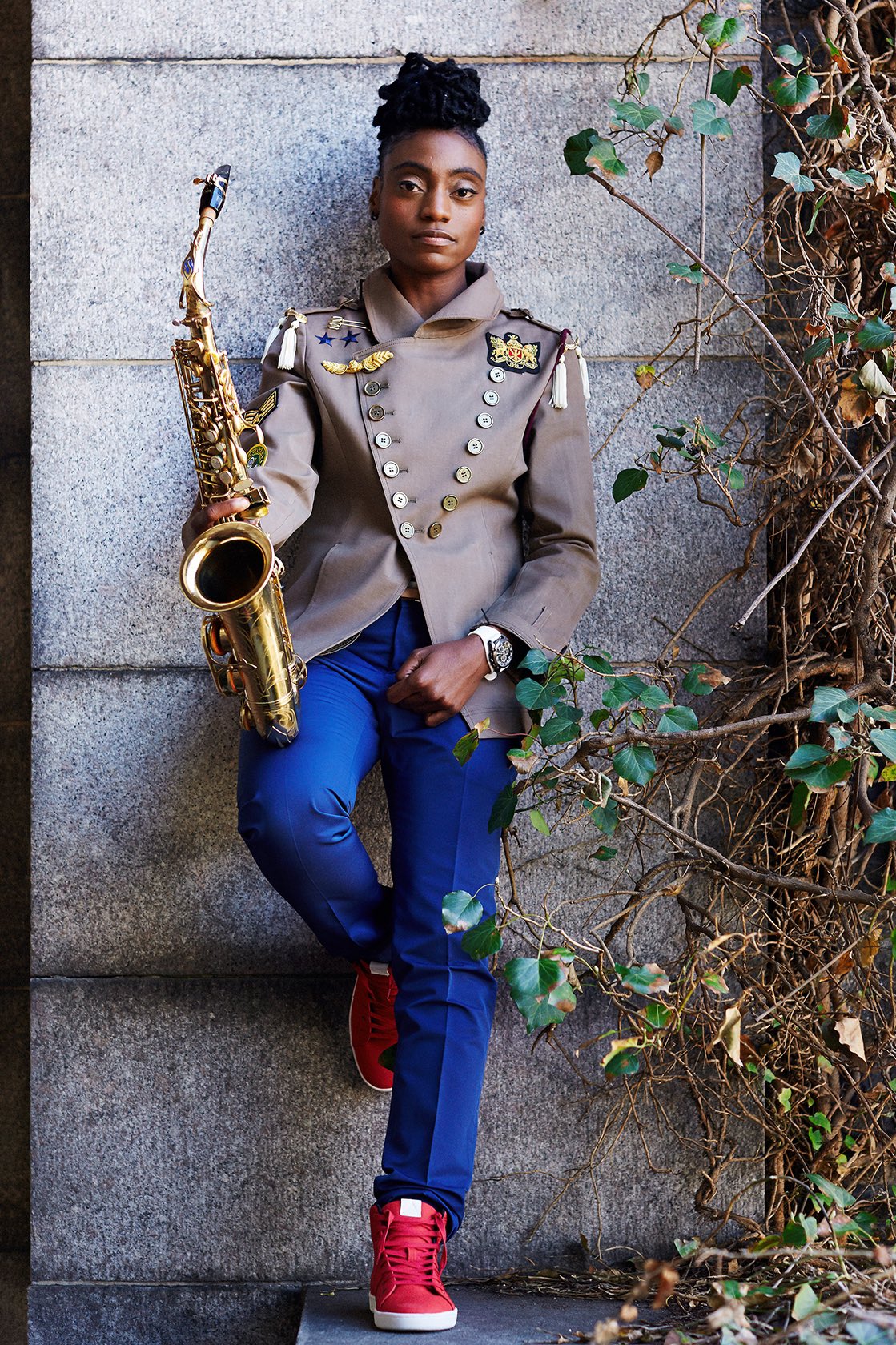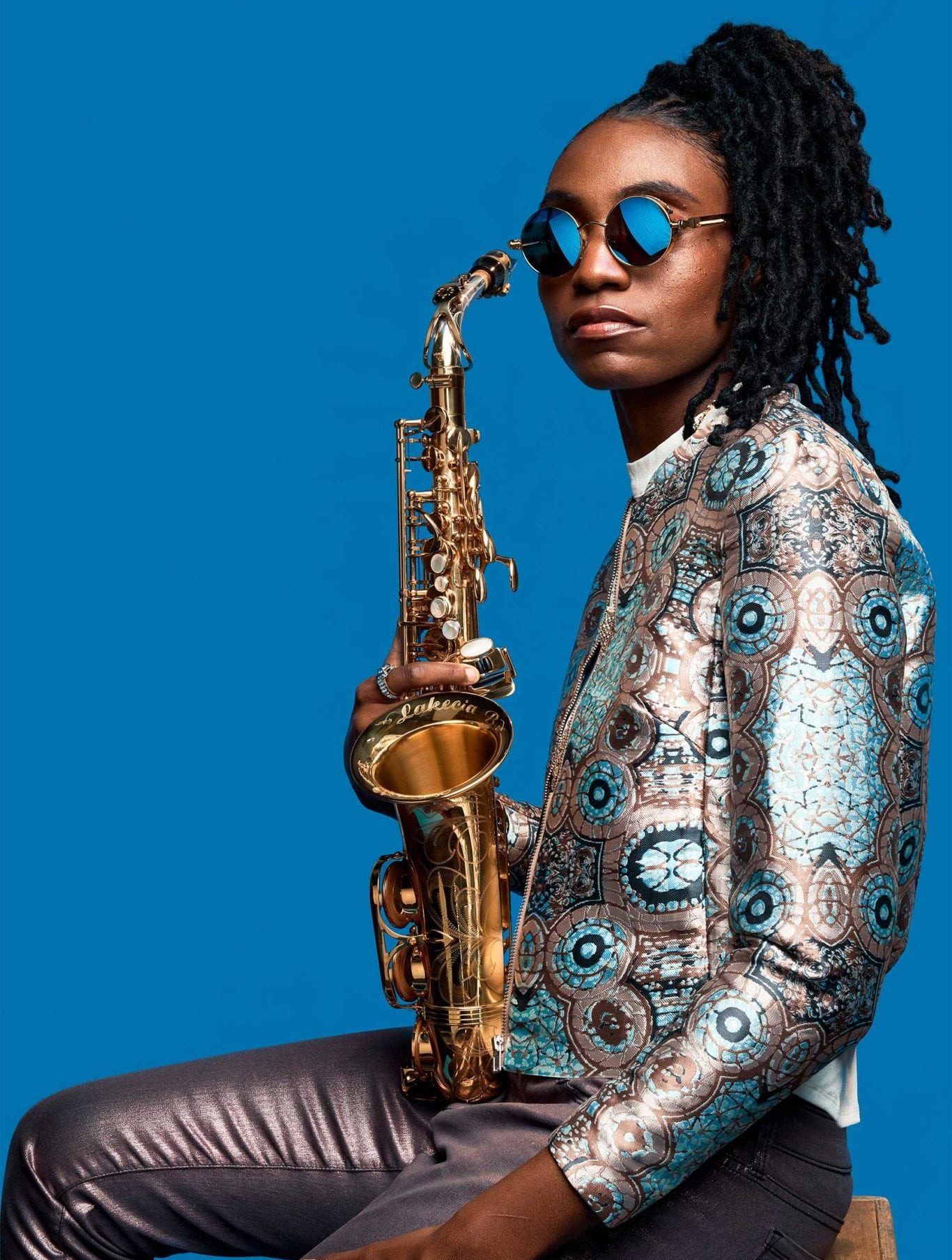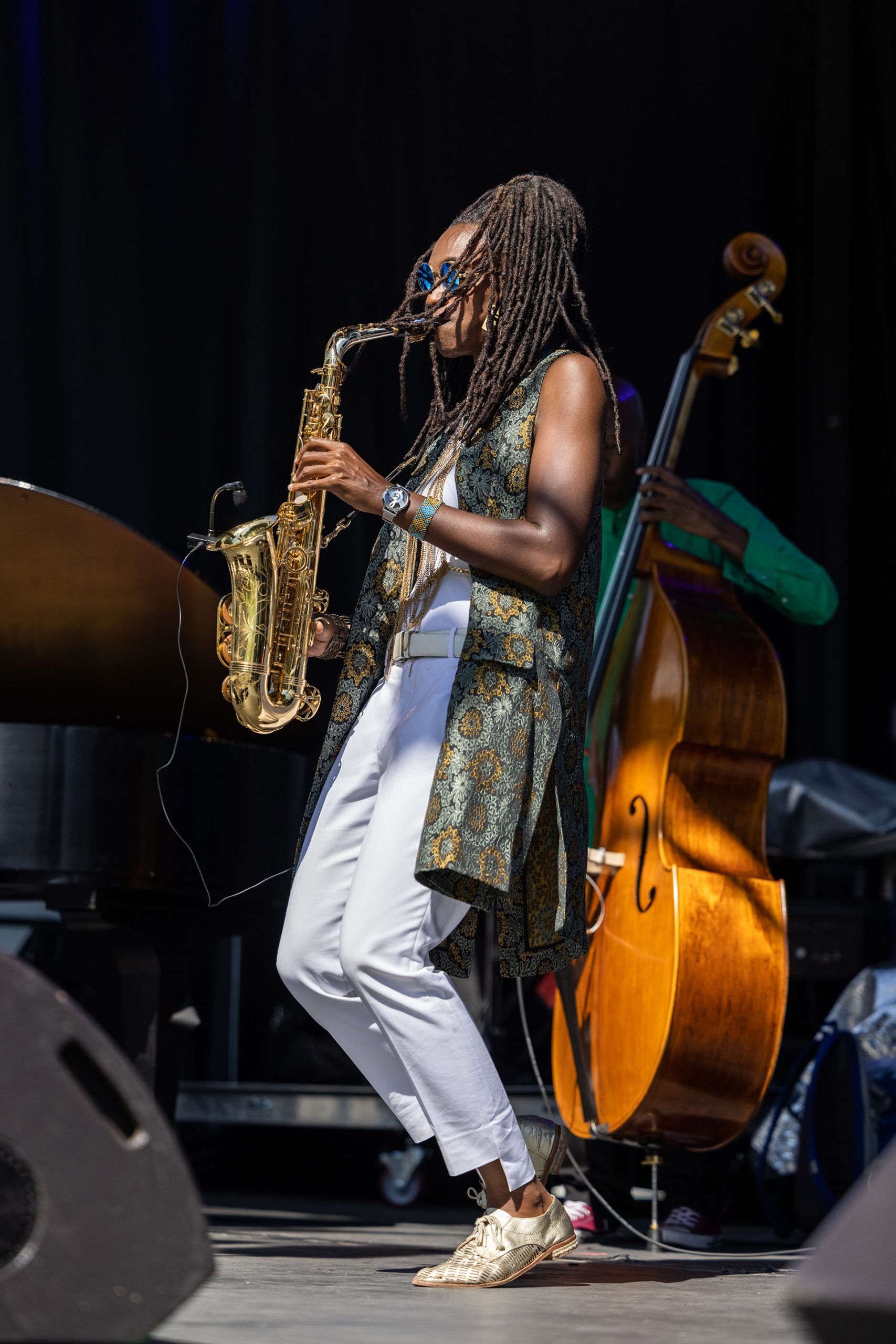
In the 21st century, and especially so in the USA, most of the discourse is dominated by a male point of view. Even when women are speaking, too often the ideas coming out of their mouths are words, or theories, that came from the minds of men. Which all is why I dig so much of what Lakecia Benjamin is doing as a thoughtful musician.
When she was younger, after graduating high school, she bopped hip hop. Fortunately, musically she quickly matured and grew far, far beyond the areas of which she had been an active proponent, and also far beyond the genre restrictions of which she was initially enamored–note that rap does not significantly reward instrumentalists.
Ms. Benjamin is aware of herself as a Black woman and additionally willingly embraces both her ethnic and musical heritages. Although the alto saxophone is her chosen instrument, she obviously is deeply impressed by, as well as inspired by, tenor and soprano saxophonist John Coltrane.
However, do not sleep on her dedication to the alto saxophone, especially since John Coltrane initially started on alto before switching to tenor and eventually doubling on soprano. Nor, do not dare overlook Lakecia’s enthusiasm for Alice Coltrane who was a spiritual being of transcendent light. Between John’s resuscitation of the soprano sax and Alice’s expert employment of the harp, the couple expanded the palette of instruments routinely used in jazz during the eras of their respective activities.
Significantly, in 2020 Lakecia put out an album of music by the Coltranes. That’s right, Pursuance: The Coltranes features the compositions of both Alice (1937–2007) and John (1926–1967), thereby elevating the Coltranes as composers and not solely as instrumentalists.
Pursuance: The Coltranes is a daring exercise, especially since Lakecia’s first album was R&B and rap oriented. However, Pursuance is strictly, hard-core jazz. In a big way. Lakecia’s Coltrane project is not only based on the compositions of Coltrane husband and wife, Lakecia also employs approximately 45 musicians on the project. A partial list of participants is massive: Reggie Workman, Ron Carter, Gary Bartz, Dee Dee Bridegwater, Meshell Ndegecello, Regina Carter, Bertha Hope, Last Poets, Greg Osby, Steve Wilson, John Benitez, Marc Cary, Marcus Gilmore, Keyon Harrold, Marcus Strickland, Brandee Younger, Georgia Anne Muldrow and Jazzmeia Horn.
Moreover, Lakecia loves to dance as she often exhibits with her onstage moves. Unsurprising, as an alto saxophonist, initially she was into Maceo Parker (of James Brown fame), however John Coltrane soon became her obvious model. She rips off solos that take the Trane on out there a minute. Her orientation is classic jazz, not the commercially oriented “smooth jazz”, although she is adept at performing in both funky and avant-garde genres.

Black music needs more musicians like Lakecia Benjamin–fearless, seriously committed to stretching out and being their whole selves.
This young sister is leading the forward way. She reaches back, yes, to bringing up the old heads–musicians who were recording in the sixties and seventies–but also Lakecia includes her own generation as well as musicians in the gap between when the music went electric and the music of where Lakecia is at now in the new millennium.
The breadth of her influences is astounding because she has studied both history and technique, and demonstrates all that she has learned whenever, or wherever, she plays–or should I say when or where she be serious, ’cause Lakecia don’t play.
NPR interview with Lakecia Benjamin

There is an important book, The Alphabet Versus the Goddess: The Conflict Between Word and Image by Leonard Shlain. The title advertises what the book is about. Essential reading for those who are ready to go deep on history and the English language. Indeed, if you enjoy Ms. Benjamin, you probably could get into Shlain’s ideas with no problem.
Without exaggeration, Lakecia is a veritable musical diety. She manifests wisdom well beyond her youth and plays with an ardor and passion that enables her to commune with the old heads while exhibiting a youthful enthusiasm for the diverse directions of emerging approaches.

As lagniappe, we close with a major three-hour, album release concert that featured numerous guest musicians whom Lakecia selected. This outing is both surprising and significant–a young Black woman is both the organizer and the main soloist in a truly democratic experience. Lakecia is clearly the leader but she is no narcissist only interested in herself, thus she is accompanied by and presents an entourage of accomplished musicians.
Rarely, if ever, has a young 21st-century saxophonist undertaken and successfully accomplished a concert of this magnitude and magnificence. Lakecia has obviously embraced and employed her inner god-spirit in order to raise herself, her fellow artists, and her audience. This is aural elevation.

